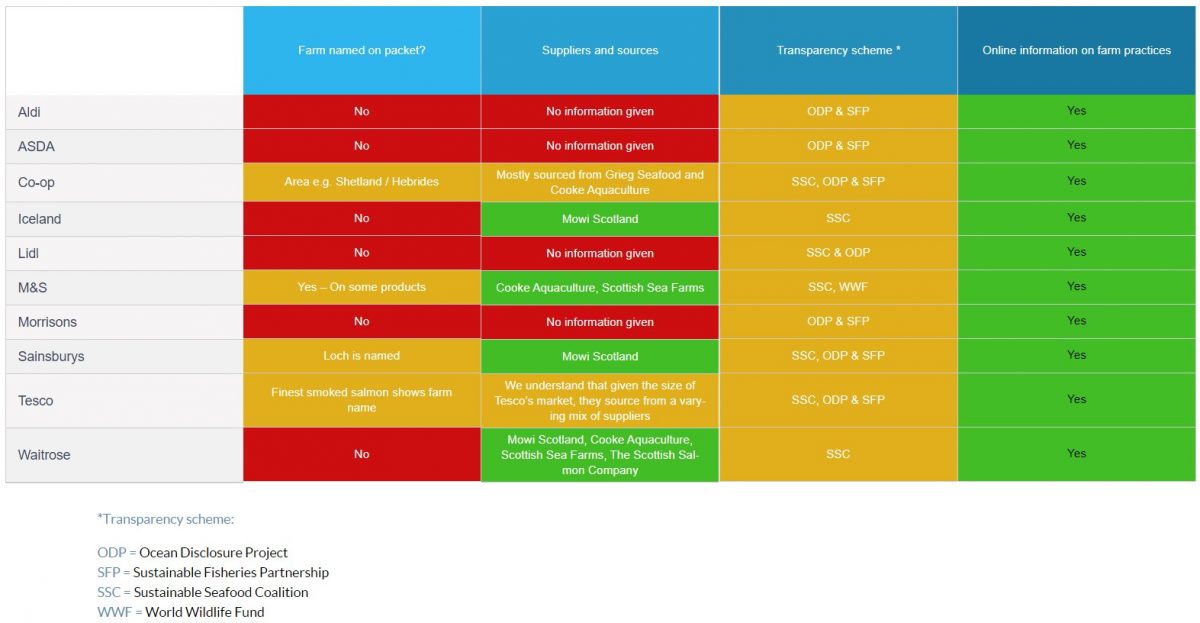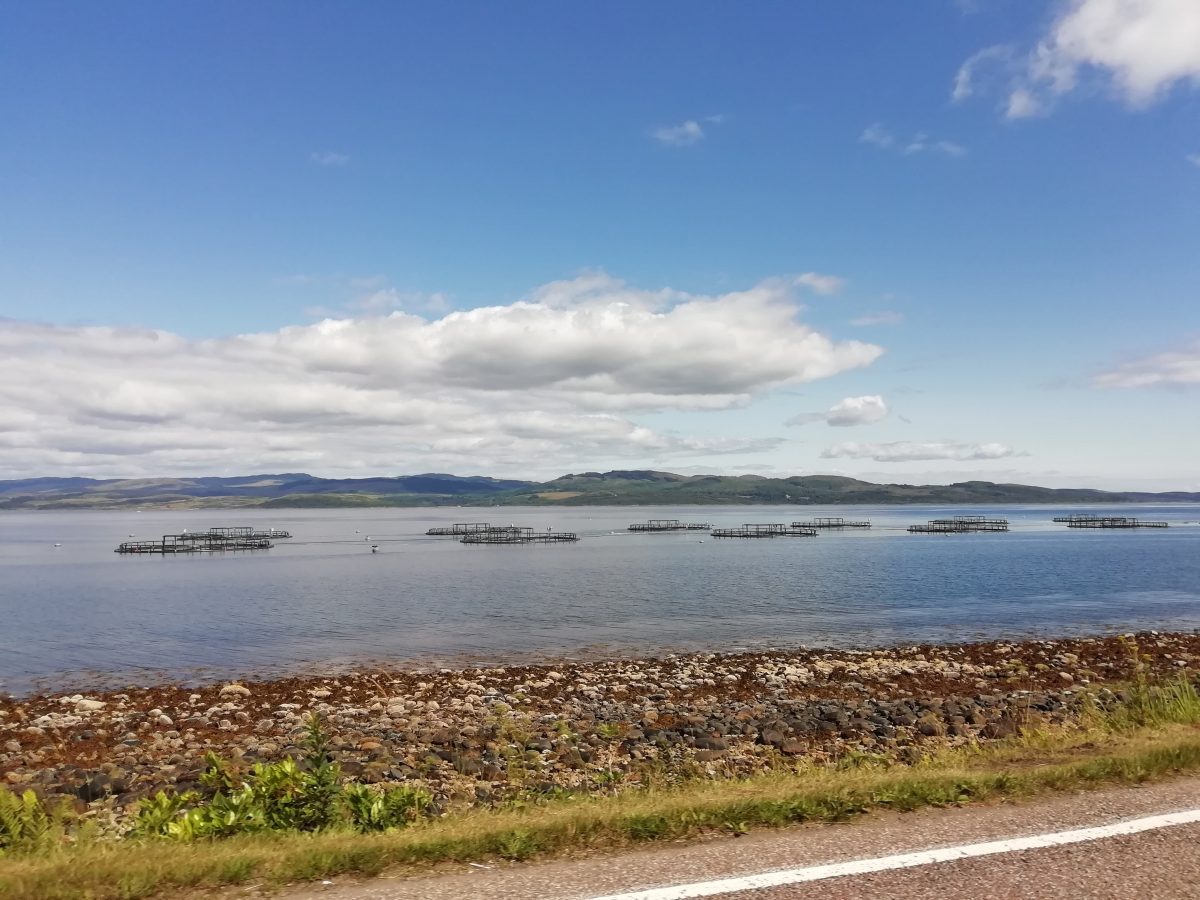Just over a year ago Fidra ran a nationwide survey of consumers who bought Scottish salmon, and found that they overwhelmingly wanted more information about what was on their plate[i]. The pandemic over the last year has made many of us focus on our own well-being, and that of our planet, making knowledge of how our food is produced even more important. However, only 4 of the 10 biggest UK supermarkets provide any on-pack information at all of where their own-brand Scottish salmon has come from, apart from being ‘farmed in Scotland’. Where the farm of a product is named on the label, it is then extremely hard to find out the environmental performance of that farm.
From source to shelf: highlighting transparency in our food supply chains.
We shared the findings of our survey with major UK retailers, and are encouraging a move to full transparency with the information they provide on their own-brand Scottish salmon produce. The information available at present to the general public, and some additional information shared with us, is collated in a new table on our Best Fishes website to show how much you as a consumer can find out about this popular fish dish (reproduced in Figure 1).

Figure 1. Retailer Transparency Table for own-brand Scottish salmon © Fidra.
Less than half of the major UK supermarkets provide any information at all of where that salmon has come from, apart from ‘a farm in Scotland’. Even in the few cases where the origin farm of the product is named, it is extremely hard to know how that farm is performing without taking on the job of an investigative journalist and delving into reams of data, as we found in our work on seabed monitoring around salmon farms[ii]. One strand of Fidra’s work is facilitating the development of a comprehensive dashboard-style database on individual salmon farms in Scotland[iii].
Taking action towards accountability
The first step to knowing more about our food and how it is produced, is knowing where it is from. There are increasing numbers of schemes enabling this to take place, from QR codes on produce labels[iv] to sustainability dashboards on company websites[v]. At present these do not go much beyond confirming the origin of the product however, and whether or not it is compliant with national regulations. Both are pretty essential pieces of knowledge, but at Fidra our vision is to see this go a step further, with the name of a farm on a product label taking you directly to detailed information on how that farm is performing, and truly enabling you as a consumer to make an informed decision. This is a decision we tend to trust our retailer to take for us – they must be looking at how these farms are performing and only sourcing from those that are performing well, right?
By enabling the concerned consumer or NGO such as ourselves to do this, retailers will be showing true accountability.

Fish farm, Loch Fyne © Fidra
[i] https://www.bestfishes.org.uk/fidra-survey-reveals-uk-consumers-will-pay-more-if-scottish-salmon-is-sustainably-produced-but-dont-feel-well-informed/
[ii] https://www.bestfishes.org.uk/fidra-report-dives-into-the-burden-on-the-benthos/
[iii] https://www.bestfishes.org.uk/getting-to-know-your-scottish-salmon-how-will-sustainability-dashboards-help/
[iv] https://www.carrefour.com/en/group/food-transition/food-blockchain
[v] https://dashboard.huonaqua.com.au/
Tags: salmon, salmon farming, Scottish salmon, Scottish salmon farming, sustainability dashboard

